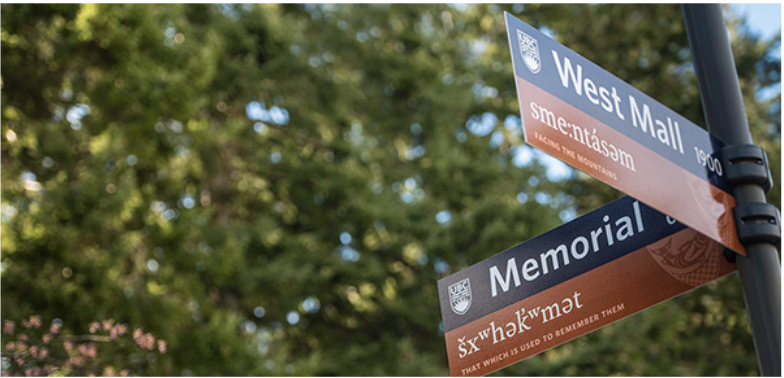Reparations As a Pathway to Growth: Sunk Cost or Investment?
by Benjamin Hobson
For decades, Canada has grappled with how to meaningfully address the lasting economic and social injustices faced by Indigenous communities. In 2014, Vancouver officially acknowledged that the land it occupies is the traditional, ancestral, and unceded territory of the Musqueam people. Over the last decade, Vancouver has continued this broader trend of land acknowledgements, public recognition and street renamings. These actions offer visibility, but fall short of targeting economic disparities that Indigenous people face. While these are steps in the right direction, they beg the question: how can reparations for marginalized communities shift from symbolic gestures to real and lasting economic investment?
Photo by Andy Clark,
Reparations are often seen as a sunk cost for governments and taxpayers, which is the principal reason that these efforts are not widely implemented. However, when strategically crafted, they can be viewed as investments in sustainable economic growth, while also simultaneously addressing a myriad of social injustices faced by Indigenous people.
New Zealand's strategies for empowering the Indigenous Māori population through an investment-driven approach provide a powerful model for addressing disparities and fostering long-term economic growth and social equity. The Whenua Māori Fund, which was created in 2020, provides targeted financial support for Māori landowners to help develop and enhance their land usage. The Fund continues to support land trustees to develop and utilize the land they have been entrusted with more efficiently. For example, with the help of the Whenua Māori Fund, trustee Jimi McLean was able to revitalize damaged land into healthy pastureland. In Māori culture, land or “whenua” is viewed as more than a physical asset; it innately carries a spiritual life force that connects them to their heritage and ancestors. “The whenua was once good pasture land before this forestry company came along,” said Jimi. “They planted eucalyptus trees which didn’t take, then ten-foot-high blackberries started taking over. The company stopped paying rent, filed for bankruptcy, and effectively walked off the land with a lot of damage done,” he added. It is clear that the Whenua Māori Fund has given McLean and other trustees the ability to address the damage done and bring the land back to what it once was, effectively returning the “mauri” (life force or essence) to the area. This allows previously economically unproductive land to be revitalized and leveraged for economic growth.
A multitude of other land productivity projects are popping up around the country, effectively leveraging the Fund to turn unused land into economic opportunity for the Māori, turning them into active managers of their land. In practice, this can be carried out in a number of ways. For instance, the Fund supplied $65,000 to set up Māori land owners in Te Waipounamu to assess the viability of creating an eco-tourism business. Today, that land is being used as a kiwi-spotting venture for tourists.
Photo by Alexander Turnbull from the Dominion Post Collection
Another strategy that New Zealand applied in their reparations policy was legislatively ensuring economic participation by the Māori. Created in 2004, the Māori Commercial Aquaculture Claims Settlement Act improved Māori access to marine farming. Aquaculture had emerged as a fast growing industry in New Zealand, but in many ways, the Māori were initially left out of this blossoming economic opportunity. However, their inclusion was enshrined by the Act by ensuring that 20% of all new aquaculture space was allocated to the Māori people. This allocation is not a one-time compensation that would represent a sunk cost for taxpayers, but rather an effective strategy that includes the Māori in the industry's rapid growth. With this approach, the Māori are not relying on government support, rather, they have full jurisdiction over how they operate and develop their assets. This solution is a long-term investment, offering valuable insight into how governments can invest in the future of Indigenous communities.
These are just a couple of examples of how beneficial the Whenua Māori Fund, the Māori Commercial Aquaculture Claims Settlement Act and others like it have been for the Māori, by returning land and industry to Māori stewardship. This effectively generates wealth for Māori populations that will gradually reduce existing economic disparities in the long term. Several key benchmarks show that the combination of treaty settlements, investment in Māori owned business and land development efforts has returned huge benefits. Māori employment saw a 47% increase from 2013 to 2018. The Māori economy’s asset base rose from $42.6 billion dollars in 2013 to $68.7 billion in 2018. The population’s business activity has increased in a range of different industries. The strategies employed by New Zealand aren’t perfect; access to capital for Māori businesses still poses a major barrier to growth, and the Māori population continues to face the struggles posed by historical injustices. However, they certainly offer a comprehensive and economically advantageous approach to reparations that should be studied by governments in our province and applied where possible.
Marginalized groups around the world each have their own unique historical context and geography, necessitating a nuanced approach to reparations. Vancouver’s 2007 Reconciliation Agreement with the Musqueam barely scratched the surface of meaningful change, serving primarily to resolve legal disputes through land transfers and financial compensation. The United Nations Declaration on the Rights of Indigenous Peoples (UNDRIP) in 2022 reaffirmed Indigenous rights to land and self-determination, yet its lack of enforcement and concrete policy changes failed to deliver economic self-sufficiency for Indigenous communities in Canada. The intentions of these local efforts are positive, but one-time settlements without an investment strategy often fail at creating lasting progress. A key difference between Vancouver’s approach and New Zealand’s is that New Zealand actively involves Indigenous groups in decision-making, while Vancouver has mostly relied on top-down, government-driven efforts, leading to vastly different outcomes. Adopting this participatory model in Vancouver could lead to more effective and sustainable reparations.
Addressing the economic and social needs of Indigenous populations such as the Musqueam people will be more complex than simply copying the successful strategies of other governments. However, the core principles of economic empowerment, holistic development, and land restitution can all be applied in different ways that would allow reparations to be a self-sustaining investment instead of a financial burden. If we are reluctant to engage in dialogue about the possible approaches to reparations, we inevitably become complacent about what solutions are available. The preconceived notion that reparations would always incur a sunk cost for governments and taxpayers would go unchallenged, and we would fail to see how reparative justice and economic progress can go hand-in-hand.



